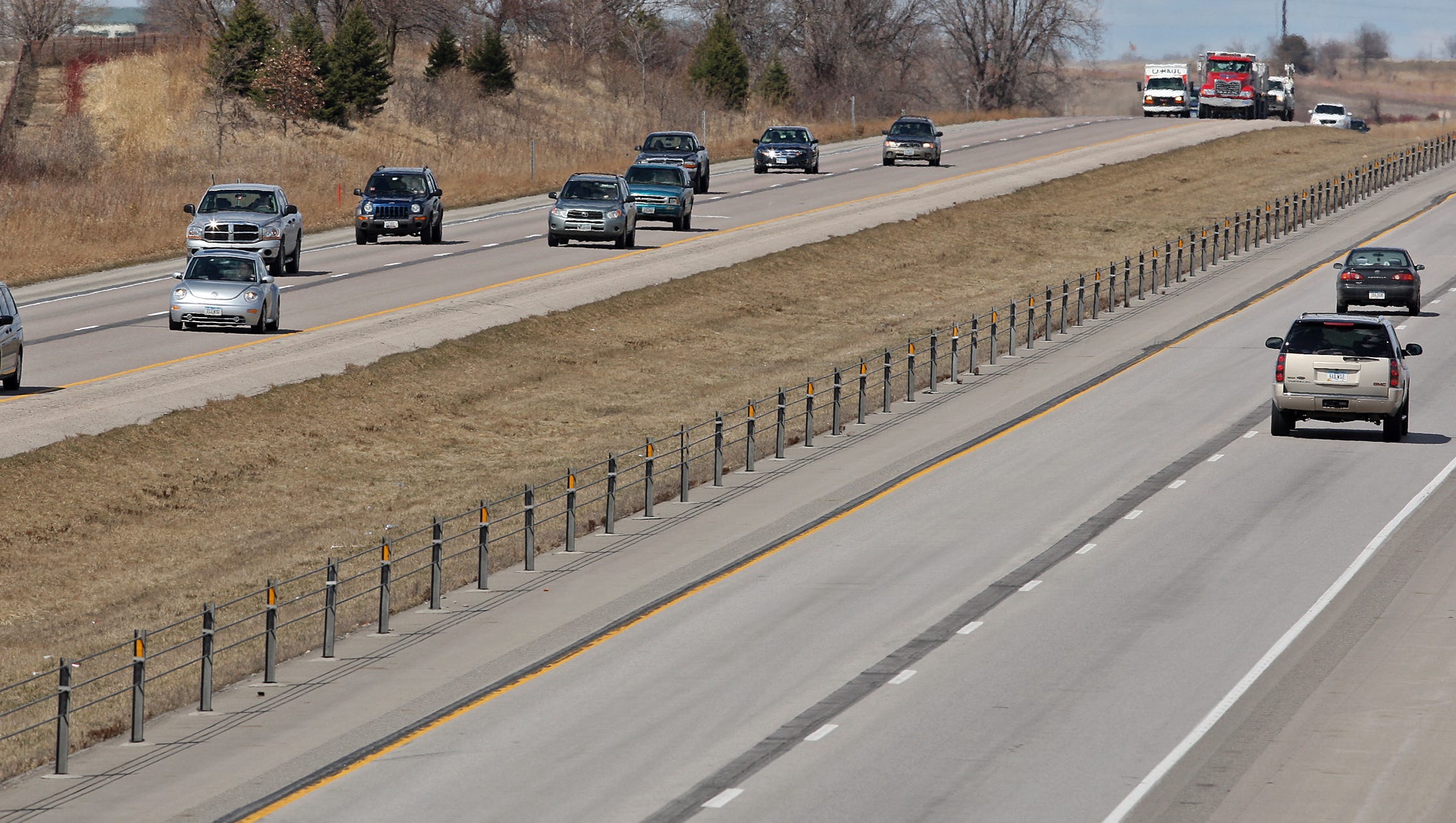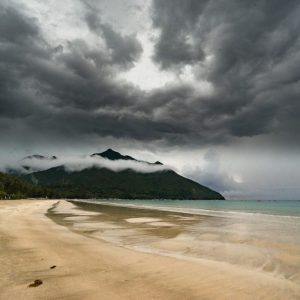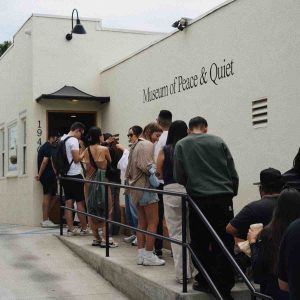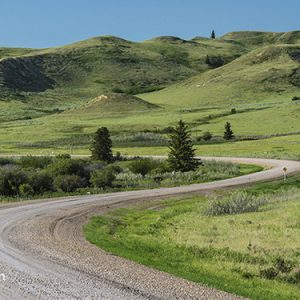
Forgotten Florida: Exploring the Sunshine State’s Wild Side on Two-Lane Highways
Florida conjures images of shimmering beaches, bustling theme parks, and vibrant nightlife. But beyond the well-trodden tourist trails lies a forgotten Florida, a realm of untamed beauty, quirky roadside attractions, and small towns whispering stories of a bygone era. To truly experience the Sunshine State, you must ditch the interstates and embrace the allure of its two-lane highways.
This isn’t your typical guide to Florida. We’re venturing into the heart of its soul, where Spanish moss drapes ancient oaks, manatees graze peacefully in crystal-clear springs, and the air hums with the rhythm of a slower, more authentic life. Pack your sense of adventure, a reliable map (GPS can be fickle out here!), and prepare to discover a Florida that will captivate your senses and leave you longing for more.
Ditching the Turnpike: Why Two-Lane Highways?
The magic of Florida’s backroads lies in their power to transport you. They offer a tangible connection to the state’s history, its diverse ecosystems, and the resilient communities that call these places home. Here’s why swapping the interstate for a scenic route is essential:
-
Slow Down and Savor: Two-lane highways force you to slow down, allowing you to truly appreciate the scenery. You’ll notice details you’d otherwise miss – the vibrant wildflowers lining the roadside, the soaring raptors overhead, and the charming architecture of historic towns.
-
Discover Hidden Gems: Forget the cookie-cutter chains. These routes are peppered with mom-and-pop restaurants serving up authentic Southern cuisine, antique shops overflowing with treasures, and quirky roadside attractions that defy explanation.
-
Connect with Nature: Many two-lane highways wind through state parks, national forests, and wildlife refuges, offering unparalleled opportunities for hiking, birdwatching, kayaking, and simply immersing yourself in the natural world.
-
Experience Local Culture: Engage with the people who live and work in these communities. You’ll find them welcoming, genuine, and eager to share their stories.
Essential Two-Lane Florida Road Trips:
Here are a few suggested routes, each offering a unique glimpse into Florida’s wild side:
1. The Forgotten Coast (Highway 98):
Stretching along the panhandle’s Gulf Coast, Highway 98 meanders through charming fishing villages, pristine beaches, and state parks teeming with wildlife. Think Apalachicola oysters, untouched dunes, and the rhythmic crash of waves.
- Highlights: St. George Island State Park, Apalachicola National Estuarine Research Reserve, historic Apalachicola, Mexico Beach.
2. The Nature Coast (Highway 19):
Following the Gulf Coast south from the panhandle, Highway 19 leads you through the Nature Coast, renowned for its crystal-clear springs, abundant manatee populations, and vast stretches of undeveloped coastline.
- Highlights: Crystal River, Homosassa Springs Wildlife State Park, Chassahowitzka National Wildlife Refuge, Weeki Wachee Springs State Park.
3. The Scenic Highway A1A (East Coast):
This iconic coastal route hugs Florida’s Atlantic shoreline, offering breathtaking ocean views, access to historic towns, and opportunities for surfing, swimming, and sunbathing.
- Highlights: St. Augustine (oldest city in the US), Daytona Beach, Flagler Beach, scenic overlooks.
4. The Florida Keys Overseas Highway (US 1):
While technically a highway, its two-lane stretches still capture the spirit of adventure. Island hop your way down to Key West, enjoying turquoise waters, vibrant coral reefs, and a laid-back island vibe.
- Highlights: Snorkeling and diving at John Pennekamp Coral Reef State Park, Key Largo, Marathon, Key West.
5. The Tamiami Trail (US 41):
Crossing the Everglades, the Tamiami Trail is a testament to human ingenuity and a window into Florida’s unique ecosystem. Keep an eye out for alligators, wading birds, and other wildlife.
- Highlights: Everglades National Park, Big Cypress National Preserve, Miccosukee Indian Village, Clyde Butcher’s Everglades Gallery.
Packing Essentials for Your Forgotten Florida Adventure:
- Map & Compass: Cell service can be spotty, so a traditional map is crucial.
- Comfortable Shoes: For hiking and exploring.
- Sunscreen & Insect Repellent: Florida’s sun and insects are relentless.
- Reusable Water Bottle: Stay hydrated!
- Binoculars: For wildlife viewing.
- Camera: Capture the beauty of your surroundings.
- Cash: Some smaller establishments may not accept credit cards.
- Sense of Adventure: Be open to the unexpected and embrace the unknown!
Must-See Quirky Stops Along the Way:
Florida’s two-lane highways are brimming with unique and often bizarre attractions. Keep an eye out for these:
- Weeki Wachee Springs: Home of the famous live mermaid shows.
- Coral Castle: A mysterious monument built by one man.
- Ginnie Springs: A natural spring offering swimming and cave diving.
- Monkey Jungle: A wildlife park where monkeys roam free.
- Marineland Dolphin Adventure: An old-school oceanarium.
Where to Eat: Savoring the Flavors of Forgotten Florida
Forget the chain restaurants! Embrace the local culinary scene. Here are a few types of establishments you should seek out:
- Seafood Shacks: Fresh catches of the day served with a side of Southern hospitality.
- Diners: Classic American fare in a retro setting.
- BBQ Joints: Slow-smoked meats dripping with flavor.
- Roadside Fruit Stands: Sample the bounty of Florida’s citrus groves.
Respecting the Environment and Local Communities:
As you explore Forgotten Florida, remember to tread lightly and respect the environment. Stay on marked trails, avoid disturbing wildlife, and dispose of your trash responsibly. Support local businesses and engage with the community in a positive way. Your actions can help preserve the beauty and authenticity of these special places for generations to come.
Planning Table:
| Feature | Interstate | Two-Lane Highway |
|---|---|---|
| Speed | Fast | Relaxed |
| Scenery | Limited | Scenic |
| Culture | Homogenized | Authentic |
| Experience | Efficient | Memorable |
| Local Businesses | Limited | Abundant |
Conclusion:
Forgotten Florida is waiting to be discovered. Ditch the predictable tourist traps, embrace the open road, and immerse yourself in the natural beauty, quirky charm, and authentic culture of the Sunshine State’s wild side. You might just find that the most rewarding Florida experiences are found far from the crowded beaches and bustling theme parks, along the winding paths of its two-lane highways. So, fuel up your car, grab your map, and get ready for an adventure you won’t soon forget.

Additional Information
Forgotten Florida: Peeling Back the Sunshine State’s Facade on Two-Lane Highways – A Deeper Dive
“Forgotten Florida: Exploring the Sunshine State’s Wild Side on Two-Lane Highways” promises a journey beyond the theme parks and crowded beaches, revealing a side of Florida often overlooked. While the allure of pristine coastline and manufactured entertainment is undeniable, the true essence of the state lies in its less-traveled paths, offering a stark contrast and a richer understanding of Florida’s history, ecology, and culture. This analysis delves deeper into why these two-lane highways are critical for understanding the real Florida, examining the types of experiences they offer, the challenges they present, and the potential for both preservation and sustainable tourism development.
The Allure of the Authentic:
Florida’s two-lane highways are arteries of authenticity, connecting small towns and rural communities that have largely resisted the homogenizing effects of mass tourism. These routes, often remnants of the original state road system, predate the interstate era and offer a glimpse into a bygone era.
- Historical Significance: Many of these roads, such as segments of the Old Dixie Highway (a precursor to US-1 and I-95) or the Tamiami Trail (US-41), are steeped in history. They were crucial for the state’s development, opening up previously inaccessible areas to agriculture, commerce, and settlement. Exploring these routes provides a tangible connection to Florida’s past, allowing travelers to understand the struggles and triumphs of early pioneers.
- Cultural Preservation: The towns along these routes often maintain distinct cultural identities, shaped by the industries that once dominated the region – agriculture (citrus, cattle, sugar cane), forestry, fishing, and even mining. Visiting these communities offers opportunities to experience unique local traditions, cuisine, and artistic expressions that are often absent from the tourist-centric areas. For example, attending a small-town rodeo in Okeechobee or sampling authentic Cuban food in Immokalee provides a cultural experience far removed from the polished veneer of Orlando.
- Ecological Insights: The two-lane highways frequently traverse ecologically sensitive areas, providing access to natural wonders that are easily missed when speeding along the interstates. These areas include the Everglades, Ocala National Forest, Apalachicola National Forest, and numerous state parks and wildlife refuges. Slowing down and observing the natural environment allows travelers to appreciate Florida’s biodiversity, understand the challenges posed by development and climate change, and connect with the importance of conservation efforts.
Examples and Case Studies:
- The Tamiami Trail (US-41): This iconic road bisects the Everglades, offering unparalleled access to the heart of this fragile ecosystem. Before its construction, reaching the Gulf Coast from Miami required a lengthy detour. The Tamiami Trail’s impact on the Everglades ecosystem has been debated for decades. While providing access and contributing to economic development, it has also fragmented the ecosystem, disrupted natural water flow, and impacted wildlife. Ongoing restoration efforts aim to mitigate these impacts while preserving the road’s historical significance.
- The Marjorie Harris Carr Cross Florida Greenway: While not a traditional highway, this corridor, initially intended as a canal, offers a similar experience of “Forgotten Florida.” Transformed into a multi-use recreational trail, it provides a glimpse into the heart of the state, showcasing its diverse landscapes, from rolling hills to dense forests. It highlights the potential for alternative land use that prioritizes conservation and recreation.
- The Small Towns of Northwest Florida (e.g., Apalachicola, Marianna, DeFuniak Springs): These communities, often passed over in favor of Panama City Beach, offer a taste of Old Florida charm. Their economies are often struggling in the face of competition from larger cities and coastal resorts. Supporting local businesses in these towns through tourism can help preserve their unique character and cultural heritage.
Challenges and Opportunities:
Preserving the character and appeal of “Forgotten Florida” presents several challenges:
- Economic Decline: Many of the communities along these routes face economic challenges, including declining populations, limited job opportunities, and aging infrastructure. Maintaining the roads themselves can be a burden on local governments.
- Development Pressure: As Florida’s population continues to grow, there is increasing pressure to develop previously untouched areas, potentially threatening the integrity of these scenic corridors.
- Environmental Degradation: Pollution from agriculture, urbanization, and transportation can impact the natural environment along these routes, jeopardizing the ecological integrity of the region.
- Lack of Awareness: Many tourists are unaware of the existence of these routes and the experiences they offer, contributing to the concentration of tourism in established destinations.
However, these challenges also present opportunities:
- Sustainable Tourism Development: Focusing on sustainable tourism practices can provide economic benefits to local communities while minimizing environmental impact. This could involve promoting eco-tourism, agritourism, heritage tourism, and small-scale hospitality businesses.
- Infrastructure Investment: Strategic investments in infrastructure, such as improved signage, bike paths, and walking trails, can enhance the visitor experience and encourage slower, more deliberate travel.
- Community Engagement: Involving local communities in tourism planning and development ensures that their needs and priorities are considered, fostering a sense of ownership and stewardship.
- Marketing and Promotion: Targeted marketing campaigns can raise awareness of “Forgotten Florida” and attract visitors who are seeking authentic experiences and a connection with nature.
Statistics and Data:
- Rural Florida’s Economic Impact: According to the Florida Department of Agriculture and Consumer Services, agriculture contributes billions of dollars to the state’s economy annually. Many of the farms and ranches that drive this sector are located along these two-lane highways.
- Tourism Spending Distribution: Studies consistently show that the majority of tourism revenue in Florida is concentrated in coastal areas and major urban centers. Diverting even a small percentage of this spending to rural communities along two-lane highways could have a significant impact on their economic well-being.
- Environmental Impact of Transportation: The Florida Department of Transportation estimates that vehicle miles traveled on state highways contribute significantly to greenhouse gas emissions. Encouraging slower, more fuel-efficient travel on two-lane highways could help reduce the state’s carbon footprint.
Conclusion:
Exploring “Forgotten Florida” on two-lane highways is more than just a scenic drive; it’s an opportunity to connect with the state’s history, culture, and ecology in a meaningful way. By understanding the challenges and opportunities facing these often-overlooked areas, we can work towards preserving their unique character and fostering sustainable tourism development that benefits both local communities and the environment. It requires a conscious decision to slow down, step off the beaten path, and appreciate the beauty and authenticity that lies hidden just beyond the surface of the Sunshine State’s well-worn tourist trails. It’s a journey that rewards the curious traveler with a deeper and more nuanced understanding of Florida’s true essence.






